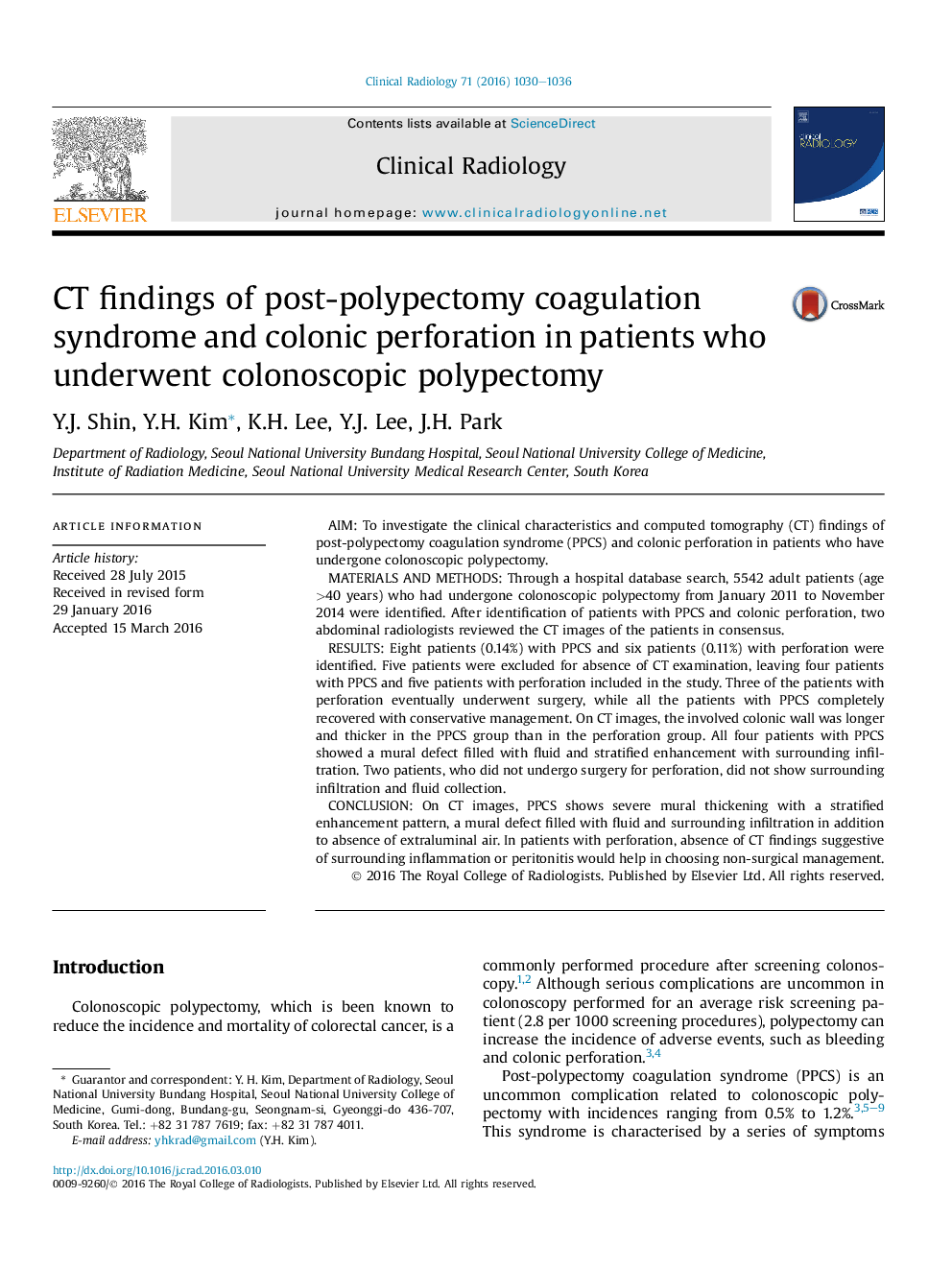| Article ID | Journal | Published Year | Pages | File Type |
|---|---|---|---|---|
| 6190712 | Clinical Radiology | 2016 | 7 Pages |
â¢PPCS shows severe colonic wall thickening with infiltration on CT.â¢The awareness of PPCS avoids unnecessary surgery in post-polypectomy patients.â¢CT can help to choose conservative management in patients with perforation.
AimTo investigate the clinical characteristics and computed tomography (CT) findings of post-polypectomy coagulation syndrome (PPCS) and colonic perforation in patients who have undergone colonoscopic polypectomy.Materials and methodsThrough a hospital database search, 5542 adult patients (age >40 years) who had undergone colonoscopic polypectomy from January 2011 to November 2014 were identified. After identification of patients with PPCS and colonic perforation, two abdominal radiologists reviewed the CT images of the patients in consensus.ResultsEight patients (0.14%) with PPCS and six patients (0.11%) with perforation were identified. Five patients were excluded for absence of CT examination, leaving four patients with PPCS and five patients with perforation included in the study. Three of the patients with perforation eventually underwent surgery, while all the patients with PPCS completely recovered with conservative management. On CT images, the involved colonic wall was longer and thicker in the PPCS group than in the perforation group. All four patients with PPCS showed a mural defect filled with fluid and stratified enhancement with surrounding infiltration. Two patients, who did not undergo surgery for perforation, did not show surrounding infiltration and fluid collection.ConclusionOn CT images, PPCS shows severe mural thickening with a stratified enhancement pattern, a mural defect filled with fluid and surrounding infiltration in addition to absence of extraluminal air. In patients with perforation, absence of CT findings suggestive of surrounding inflammation or peritonitis would help in choosing non-surgical management.
